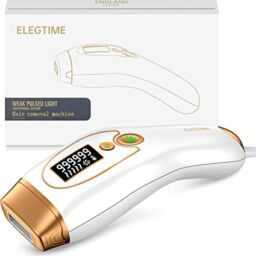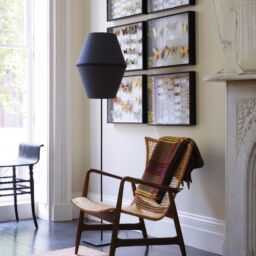Short lighting by definition is when the key light is placed to the right of camera and the subject faces camera right toward the light. This lets light fall on the narrow side of the face leaving a shadow on the broad side of the face, which is facing the camera. The actual position of the light or lights will depend on the style and mood of the portrait anticipated.
The positioning of lights when shooting portrait photographs is by no means an exact science. There are many variables which affect the final outcome. These include: the models facial features, the exact position of the head, the position of the camera and the position of the lights.
Positioning of the light in relation to the subject and camera
Starting point
Start by placing the subject in the centre of an imaginary circle. Place the light and the camera on the circle perimeter so that a ninety degree angle is formed when you draw a line from the camera to the subject and from the subject to the light. At all times the subject, light and camera remain within one quadrant of the circle. Set both the light and the camera to the subject’s eye level. When the subject faces the camera directly you will have half the face lit and the other half in shadow. In effect this is side lighting.
Short lighting
When the set-up has been achieved, ask the subject to turn his or her head to camera right, or subject left, which exposes the broad side of the face to the camera and the narrow side of the face to the light. This is how the term short lighting is derived (the short side of the face is closer to the key light). This exercise is best done with a constant light. This can be your studio flash’s model light or a light similar to a redhead (used in television). This will allow you to see the effect of the light position on your subject immediately. Using a flash only will mean lots of trial and error, which is enormously time consuming.
How does short lighting affect the portrait?
- The face appears slim when the shadow is on the broad side
- Adds character to portraits
- Suits masculine portraits through exploitation of texture
The effect of short lighting technique will depend on:
- The facial features of your subject
- The horizontal angle of the light
- The vertical angle of the light (how high or low the light is in relation to the subject)
- The exact position of the face (especially for Rembrandt lighting where the nose shadow must meet the shadow on the broad side of the face to create the famous Rembrandt Triangle)
- The distance of the light from the subject
- The quality (hard, soft)
- The amount of fill
- The position of the fill
Pay attention to each shot
Short light requires precise attention to detail when shooting portraits. It is easy to change the lighting mode to broad lighting by accidentally moving the key light in relation to the subject, but even more so, by the subject subtly changing poses. It only takes a small movement in the wrong direction to affect the desired outcome.
Short lighting must be compared to other lighting techniques
Exposing the key light to the narrow side of the face is one of many lighting techniques which should also be studied. These include:
- Rembrandt
- Butterfly
- Beauty
- Broad
- High key
- Low key
This will help you make the best choice for your particular portrait needs.
AUTOPOST by BEDEWY VISIT GAHZLY



